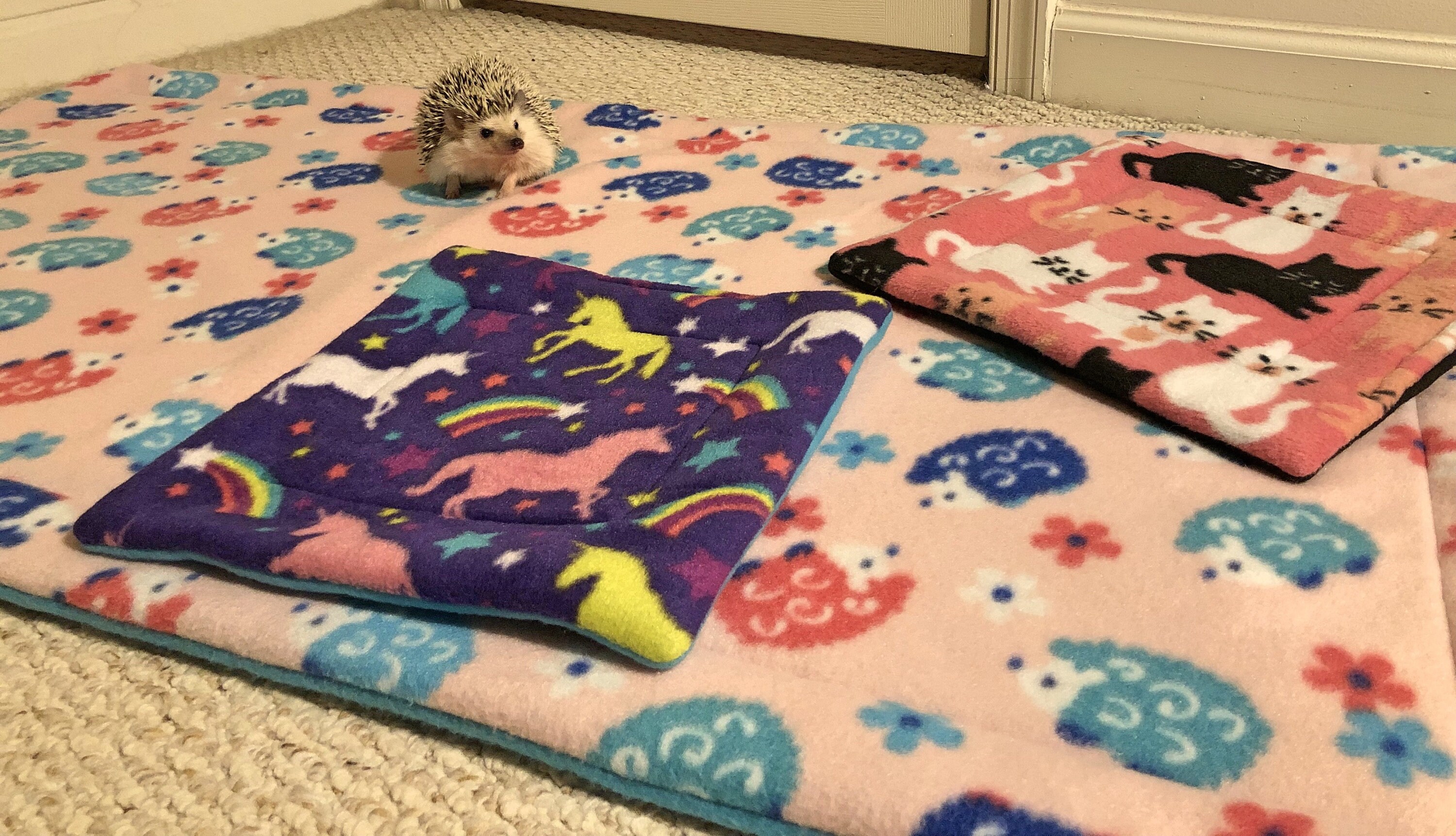In the companionship of adorable guinea pigs, providing them with a comfortable and hygienic home is paramount. Flea liners, crafted with soft fleece fabric, offer an exceptional solution for ensuring your furry friends’ wellbeing. With their exceptional absorbency and odor-resistant properties, fleece liners seamlessly wick away moisture, keeping the environment dry and fresh for your beloved pets.

Image: www.thetinyherd.com
Embarking on a fleece liner-making journey is a rewarding experience, empowering pet owners with the satisfaction of creating a tailored haven for their guinea pigs. While the process may seem daunting at first, fear not, as we have meticulously compiled a comprehensive guide to help you navigate every step with ease. Read on to discover the secrets of crafting cozy and functional fleece liners for your cherished companions.
Essential Materials for Your Fleece Liner Adventure
Before delving into the delightful world of fleece liner creation, it is imperative to gather the necessary materials. These include:
- Fleece Fabric: Opt for high-quality, anti-pill fleece fabric, available in a plethora of colors and patterns to match your guinea pig’s personality and your decor.
- Measuring Tape: This indispensable tool ensures precise measurements for a perfectly fitting liner.
- Fabric Scissors: Sharp fabric scissors will make cutting the fleece fabric a breeze.
- Sewing Machine: A reliable sewing machine will swiftly stitch your liner together.
- Thread: Choose a strong thread that complements the color of your fleece.
Measuring and Cutting: Laying the Foundation for a Custom Fit
The foundation of a perfectly fitting fleece liner lies in accurate measurements. To determine the required dimensions, follow these steps:
1. Measure the Length and Width: Using your measuring tape, determine the length and width of your guinea pig’s cage.
2. Consider Overhang: Add approximately 6 inches to both the length and width measurements to create an overhang that will tuck securely under the cage.
Once armed with your precise measurements, meticulously cut the fleece fabric accordingly. Remember, precision is key for a snug fit.
Assembling the Fleece Liner: A Step-by-Step Guide
With your fleece fabric precisely cut, it’s time to assemble the liner. Follow these steps for a flawless finish:
1. Overlock the Edges: Using a serger or a simple zig-zag stitch on your sewing machine, overlock the raw edges of the fabric to prevent fraying and unraveling.
2. Stitch the Side Seams: Place the two long sides of the fabric right sides together and stitch them, leaving a small opening for turning the liner inside out later.
3. Stitch the End Seams: With the side seams complete, bring the two short ends of the fabric together and stitch them, creating the end seams of the liner.
4. Turn the Liner Inside Out: Carefully turn the liner inside out, pushing out the corners to achieve a clean and polished look.
5. Top-Stitch the Opening: Locate the opening left for turning and top-stitch it closed, reinforcing the seam and ensuring durability.

Image: www.etsy.com
Inserting the Liner: Providing a Snug Haven for Your Guinea Pigs
Your custom-made fleece liner is now ready to be placed in your guinea pig’s cage. Spread it out evenly, ensuring it fits snugly under the cage’s edges. The overhang should provide a cozy and secure border around the perimeter.
Maintaining Your Fleece Liner: Ensuring Hygiene and Freshness
To maintain the hygiene and freshness of the fleece liner, regular cleaning is necessary. Here’s a simple maintenance routine to follow:
1. Shake and Brush Regularly: Daily or twice a day, shake the liner to remove loose debris and hay. You can also use a soft brush to gently remove any remaining particles.
2. Wash in Hot Water: Once a week, wash the liner in hot water with a gentle detergent. Avoid using fabric softeners or bleach, as these can irritate your guinea pigs’ skin.
3. Tumble Dry or Air Dry: Dry the liner on a low heat setting in your dryer or air dry it completely before placing it back in the cage.
How To Make Fleece Liners For Guinea Pigs
Conclusion: Enhancing Your Guinea Pig’s Well-being with Cozy and Practical Fleece Liners
Creating fleece liners for your guinea pigs is a rewarding and practical endeavor that provides numerous benefits. Not only are the liners soft, comfortable, and absorbent, but they are also incredibly easy to maintain, saving you time and effort in the long run.
By following the detailed instructions outlined in this comprehensive guide, you can confidently craft fleece liners that perfectly fit your guinea pig’s cage and meet their specific needs. Your furry friends will undoubtedly appreciate the cozy and hygienic environment, and you will have the satisfaction of knowing that you have provided them with a safe and comfortable home.







